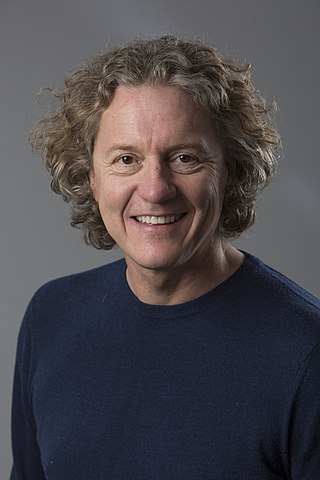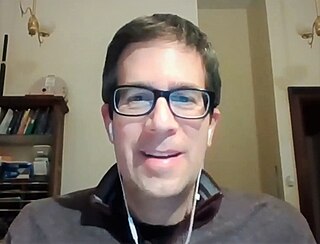
The Kitt Peak National Observatory (KPNO) is a United States astronomical observatory located on Kitt Peak of the Quinlan Mountains in the Arizona-Sonoran Desert on the Tohono Oʼodham Nation, 88 kilometers (55 mi) west-southwest of Tucson, Arizona. With more than twenty optical and two radio telescopes, it is one of the largest gatherings of astronomical instruments in the Earth's northern hemisphere.

Helen Battles Sawyer Hogg was an American-Canadian astronomer who pioneered research into globular clusters and variable stars. She was the first female president of several astronomical organizations and a scientist when many universities would not award scientific degrees to women. Her scientific advocacy and journalism included astronomy columns in the Toronto Star and the Journal of the Royal Astronomical Society of Canada. She was considered a "great scientist and a gracious person" over a career of sixty years.

Eleanor Margaret Burbidge, FRS (née Peachey; 12 August 1919 – 5 April 2020) was a British-American observational astronomer and astrophysicist. In the 1950s, she was one of the founders of stellar nucleosynthesis and was first author of the influential B2FH paper. During the 1960s and 1970s she worked on galaxy rotation curves and quasars, discovering the most distant astronomical object then known. In the 1980s and 1990s she helped develop and utilise the Faint Object Spectrograph on the Hubble Space Telescope. Burbidge was also well known for her work opposing discrimination against women in astronomy.

The Astronomical Society of the Pacific (ASP) is an American scientific and educational organization, founded in San Francisco on February 7, 1889, immediately following the solar eclipse of January 1, 1889. Its name derives from its origins on the Pacific Coast, but today it has members all over the country and the world. It has the legal status of a nonprofit organization.

Kielder Forest is a large forestry plantation in Northumberland, England, surrounding Kielder village and the Kielder Water reservoir. It is the largest man-made woodland in England with three-quarters of its 250 square miles (650 km2) covered by forest. The majority of the forest lies within Kielder Water and Forest Park, with the southern tip known as Wark Forest lying within Northumberland National Park. The forest is next to the England - Scotland border.

Sir Arnold Whittaker Wolfendale FRS was a British astronomer who served as the fourteenth Astronomer Royal from 1991 to 1995. He was Professor of Physics at Durham University from 1965 until 1992 and served as president of the European Physical Society (1999–2001). He was President of the Royal Astronomical Society from 1981 to 1983.

The Institute of Astronomy (IoA) is the largest of the three astronomy departments in the University of Cambridge, and one of the largest astronomy sites in the United Kingdom. Around 180 academics, postdocs, visitors and assistant staff work at the department.

The Dunsink Observatory is an astronomical observatory established in 1785 in the townland of Dunsink in the outskirts of the city of Dublin, Ireland.
Terence Dickinson was a Canadian amateur astronomer and accomplished astrophotographer who lived near Yarker, Ontario, Canada. He was the author of 14 astronomy books for both adults and children. He was the founder and former editor of SkyNews magazine. Dickinson had been an astronomy commentator for Discovery Channel Canada and taught at St. Lawrence College. He made appearances at such places as the Ontario Science Centre. In 1994, the International Astronomical Union committee on Minor Planet Nomenclature named asteroid 5272 Dickinson in honour of his “ability to explain the universe in everyday language.”

The Royal Observatory, Edinburgh (ROE) is an astronomical institution located on Blackford Hill in Edinburgh. The site is owned by the Science and Technology Facilities Council (STFC). The ROE comprises the UK Astronomy Technology Centre (UK ATC) of STFC, the Institute for Astronomy of the School of Physics and Astronomy of the University of Edinburgh, and the ROE Visitor Centre.
Lisa Jennifer Kewley is an Australian Astrophysicist and current Director of the Center for Astrophysics | Harvard & Smithsonian. Previously, Kewley was Director of the ARC Centre of Excellence for All Sky Astrophysics in 3-D and ARC Laureate Fellow at the Australian National University College of Physical and Mathematical Sciences, where she was also a Professor. Specialising in galaxy evolution, she won the Annie Jump Cannon Award in Astronomy in 2005 for her studies of oxygen in galaxies, and the Newton Lacy Pierce Prize in Astronomy in 2008. In 2014 she was elected a fellow of the Australian Academy of Science. In 2020 she received the James Craig Watson Medal. In 2021 she was elected as an international member of the National Academy of Sciences. In 2022 she became the first female director of the Center for Astrophysics | Harvard & Smithsonian.

The Irish Astronomical Society, the oldest astronomy club in Ireland, was founded in D'Olier Street, Dublin on 5 October 1937.

Iso-Heikkilä Observatory is an amateur astronomical observatory used by a local amateur astronomical association, Turun Ursa ry in the Iso-Heikkilä district of Turku, Finland.

The Northumberland Astronomical Society was founded in 2000 by local amateur astronomers in Northumberland, UK. The society is informally known among its members as "NASTRO". The first formal meetings of the society were held in the village hall at Low Hauxley but increasing membership and the support of the Northumberland Wildlife Trust saw meetings move to the visitor centre in the nearby Hauxley Nature Reserve in 2002. The Nature Reserve was burned down in an arson attack on 29 June 2010, so society meetings are now held in the Beehive function room at The Trap Inn until the new building is completed, which is expected to be in 2017.
Stargazing Live is a British live television programme on astronomy that was broadcast yearly on BBC Two over three nights every winter from 2011 to 2017. The series was primarily presented by scientist Brian Cox and comedian and amateur astronomer Dara Ó Briain with support from TV presenter and biochemist Liz Bonnin and astronomer Mark Thompson. For the first six series, the show was broadcast from Jodrell Bank Observatory in Cheshire, and featured live links from scientific facilities in locations such as Hawaii, South Africa, and Norway. The seventh series in 2017 was broadcast from Siding Spring Observatory in Australia, and a special episode filmed at Kennedy Space Center was broadcast in July 2019 to celebrate the 50th anniversary of the Apollo 11 mission.

The Jodcast is a bimonthly podcast created by astronomers at Jodrell Bank Centre for Astrophysics (JBCA), University of Manchester in Manchester, England. It debuted in January 2006, aiming to inspire and inform the public about astronomy and related sciences, to excite young people with the latest astronomy research results, to motivate students to pursue careers in science, and to dispel stereotypes of scientists as incomprehensible and unapproachable.

Gary Fildes is an amateur astronomer.

Dean Regas is an American astronomer, public speaker, author, and television host. He is most widely known as the cohost of the syndicated television show Star Gazers, which airs daily on more than 100 PBS stations around the world. He was the Outreach Astronomer for the Cincinnati Observatory from 2000 to 2023 where he specialized in astronomy education and public speaking. Regas is the author of three books Facts From Space!, 100 Things to See in the Night Sky, and 100 Things to See in the Southern Night Sky.
Snow King Observatory and Planetarium is a planned astronomy facility on US Forest Service property at the 7,808-foot (2,380 m) summit of Snow King Mountain in Jackson, Wyoming. In January 2020, Bridger–Teton National Forest administrators released a draft environmental impact statement regarding the proposed facility. A Nevada–Wyoming amateur astronomer, Samuel Singer, created the nonprofit Wyoming Stargazing in 2014 to foster the project. Designer, Jakub Galczynski, joined Samuel Singer in 2015 to design and draft the Snow King Observatory.
















